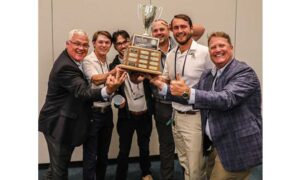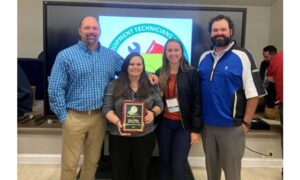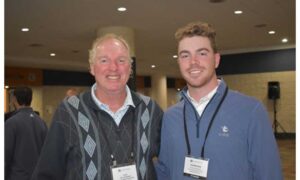Golf courses along the South Carolina coast are recovering from a second wave of issues stemming from devastating floods last fall. Saturated soils and cloudy skies induced a fungal disease that attacked bermudagrass putting greens just as they were moving into dormancy.
The resultant damage only became apparent when temperatures finally picked up after a mild spring. Instead of emerging with vigorous green growth from its cool-season hibernation, large swaths of bermudagrass were dead.
Courses from Myrtle Beach to Hilton Head were affected with the Charleston area the worst hit. Similar damage also appeared in central and south Florida.
“I saw more catastrophic loss of putting greens grasses in the area from February to the end of May than I have seen in the last 25 years,” says United States Golf Association green section agronomist Patrick O’Brien. “Conditions were perfect for Pythium root rot. They couldn’t have been more ideal.”
Damage was widespread and did not discriminate between public or private facilities or between varieties of bermudagrass. Loss of grass on some putting greens was as much 70 percent forcing golf course superintendents to make costly repairs.
Patriots Point Golf Links in Mt. Pleasant was one of a number of public access courses which discounted green fees as a result. The course cut rates by 50 percent until August 31 while three greens remain closed for regrassing. Anyone taking advantage of the discounted rates also receives a $25 round when conditions improve.
“As the 2016 season approached, our cool weather grass began to burn out like it should, but our bermudagrass did not return to allow for quality playing conditions,” the club’s website says. “With that, most of our greens have very little grass at this time.
The River Course, one of two at private Kiawah Island Club south of Charleston suffered significant damage while the Cassique course escaped unscathed. The club’s director of golf course maintenance Randall Glover suspects “a combination of things” led to the turf loss up and down the coast. “A lot of courses in the area are still struggling,” he says. “It was a perfect storm of a lot of things.”
Glover says saturated soils were a big factor but he believes lack of direct sunlight because of sustained cloud cover was an even greater cause. “When you’re not getting sunlight for that length of time in the fall things can start turning south on you in a hurry,” he says. He raised mowing heights and applied a fungicide at Cassique which may have averted damage there.
“These grasses are very high light intensity,” O’Brien told South Carolina Public Radio. “The leaves on them are like little solar panels. If those leaves aren’t provided with the energy they need, the plant health can suffer.”
At Daniel Island Club, certified golf course superintendent Mike Fabrizio had to make the majority of the repairs on the first six greens of the club’s Ralston Creek course. Rather than resprig which would have forced the course to close, Fabrizio chose to replace damaged areas with thousands of plugs of healthy turf. Yeamans Hall Club, another high-end private club, used some temporary greens while damage was repaired.
“There are so many factors at play as there always when Mother Nature is involved,” Fabrizio says. “We had almost no damage on the Beresford Creek course but a few hundred yards away on the first six holes of the Ralston Creek course we lost on average of close to 30 percent of turf. The worst damage was on the steepest slopes especially if they were north or north-west facing and on areas where water couldn’t get off the green.”
Fabrizio suspected the onset of Pythium root rot in the fall but soil samples he sent for testing came back negative. He believes the disease did in fact arrive soon after those results.
“There was no discrimination,” says Rob Daniel, certified golf course superintendent at RiverTowne Country Club. “All kinds of courses with all kinds of budgets and superintendents with all kinds of experience were affected. It was pretty brutal. I’m just counting my lucky stars that we escaped any serious issues.”
Daniel points out that no courses are the same and that myriad factors including shade, water quality, soil quality and drainage could all influence how individual courses fared.
Last year was the wettest on record in Charleston according to the National Weather Service. Nearly a third of 73 inches of rain recorded fell on the Low Country in early October. While the odds are against a repeat event this year, O’Brien expects more superintendents will be proactive with fungicide programs this fall.


























